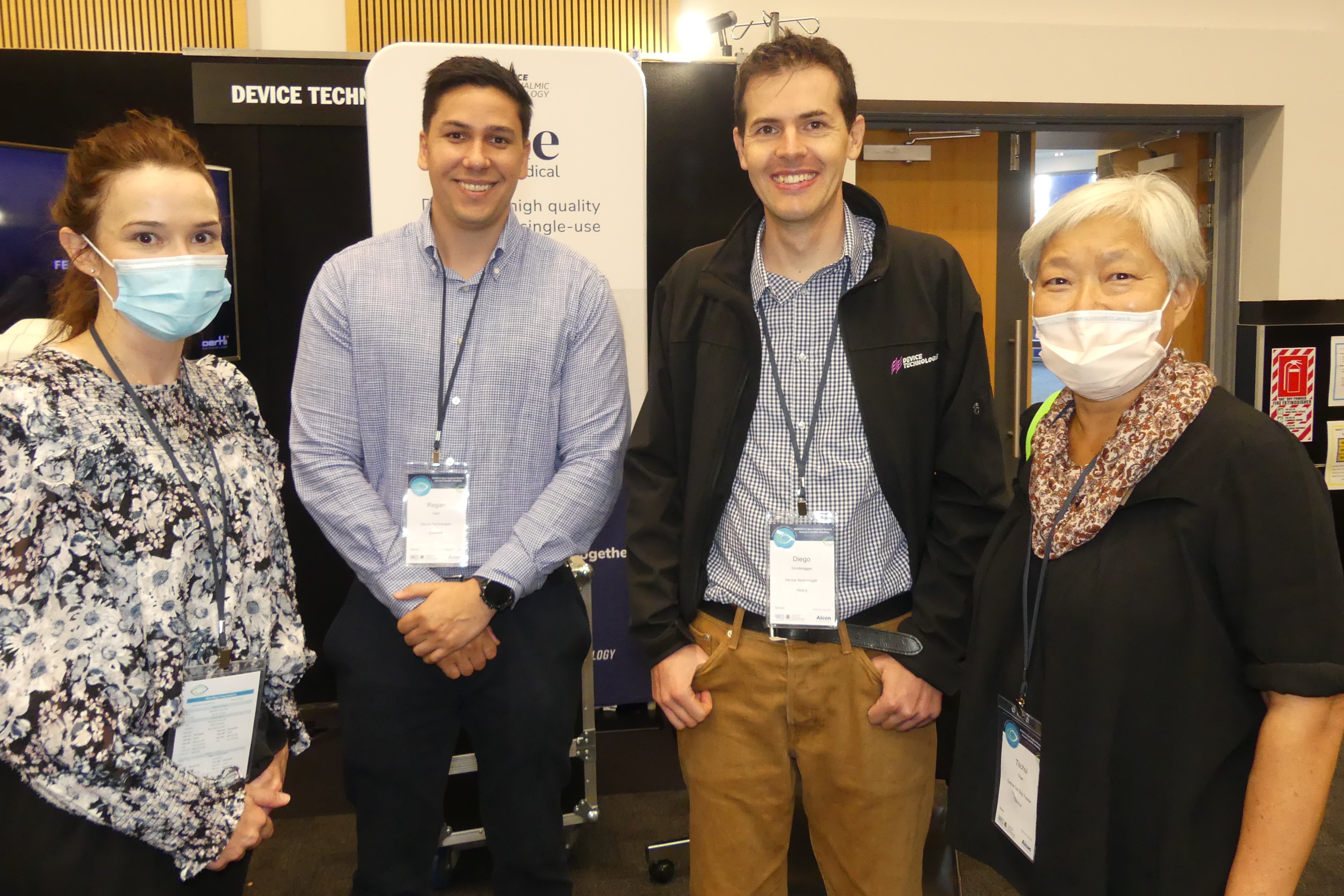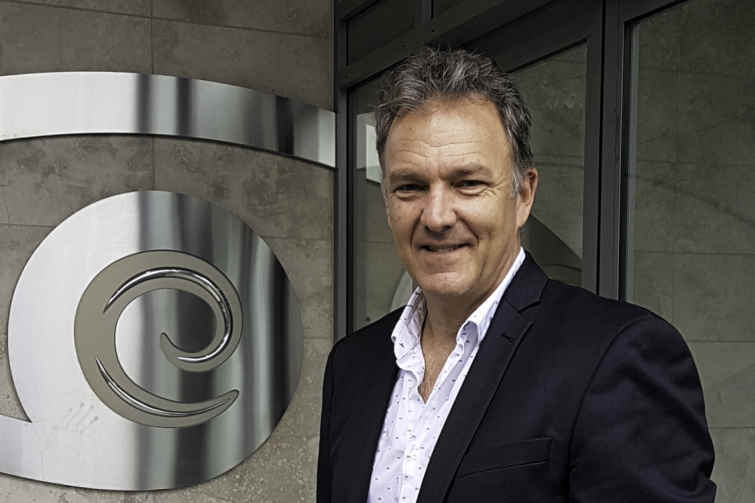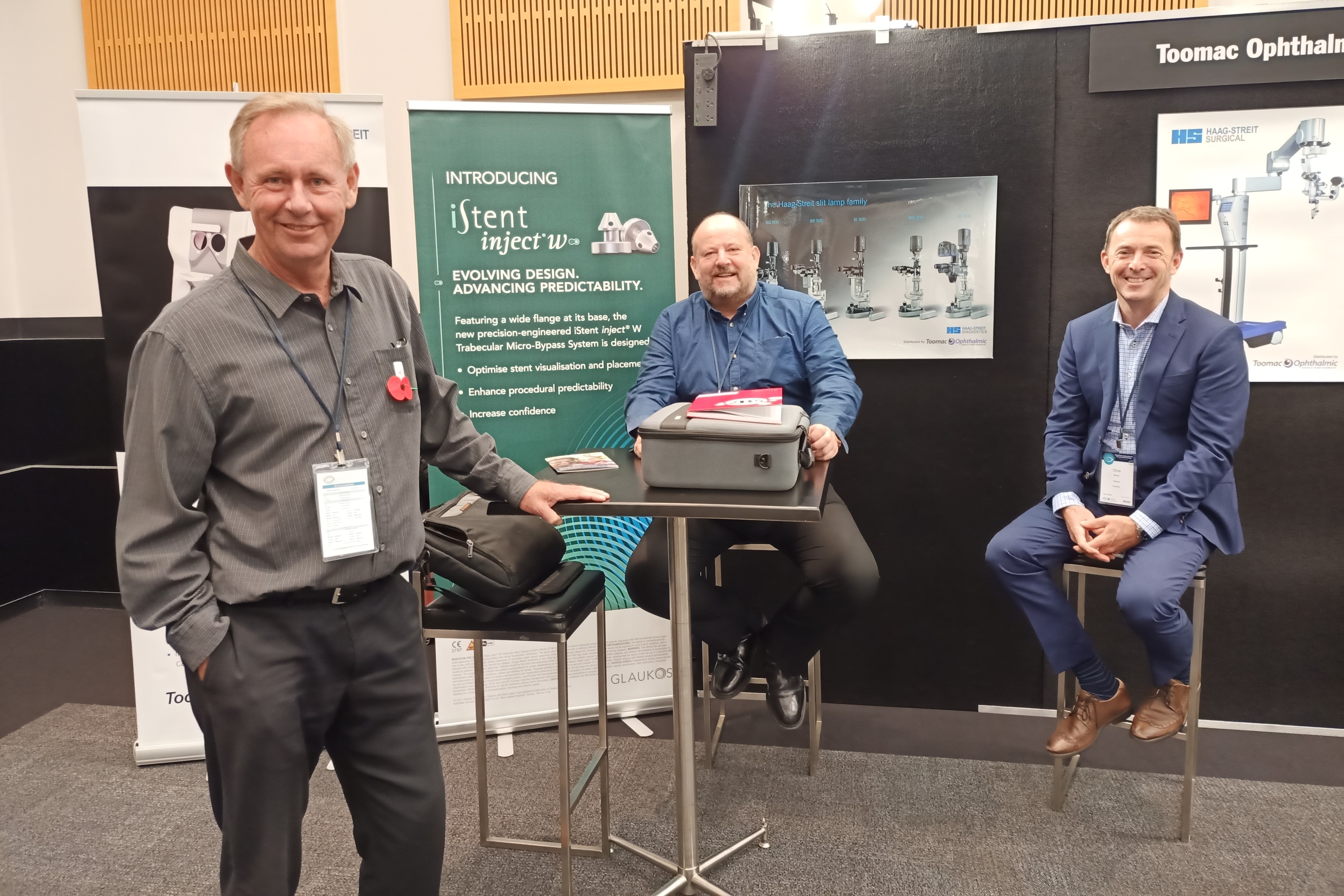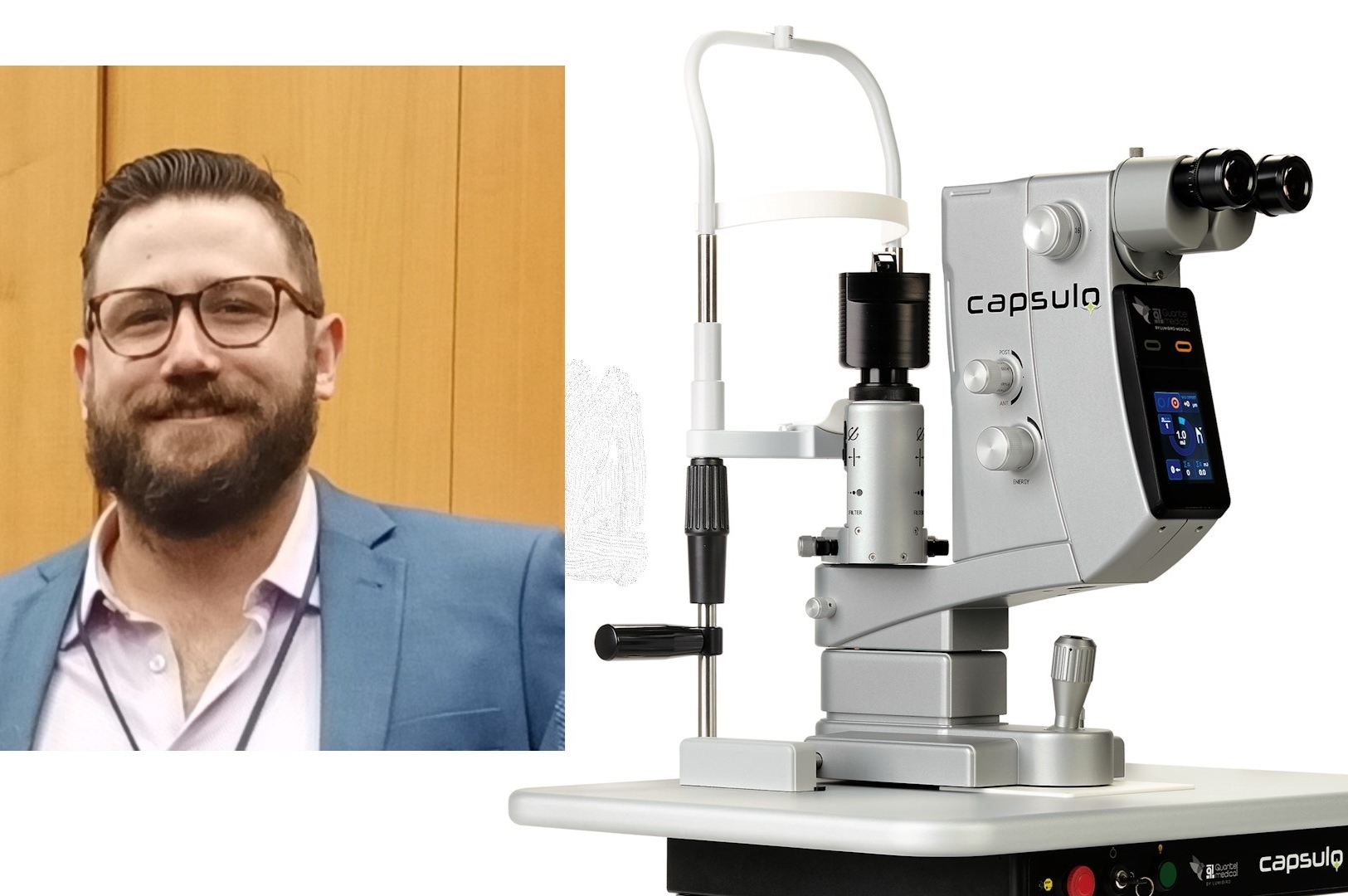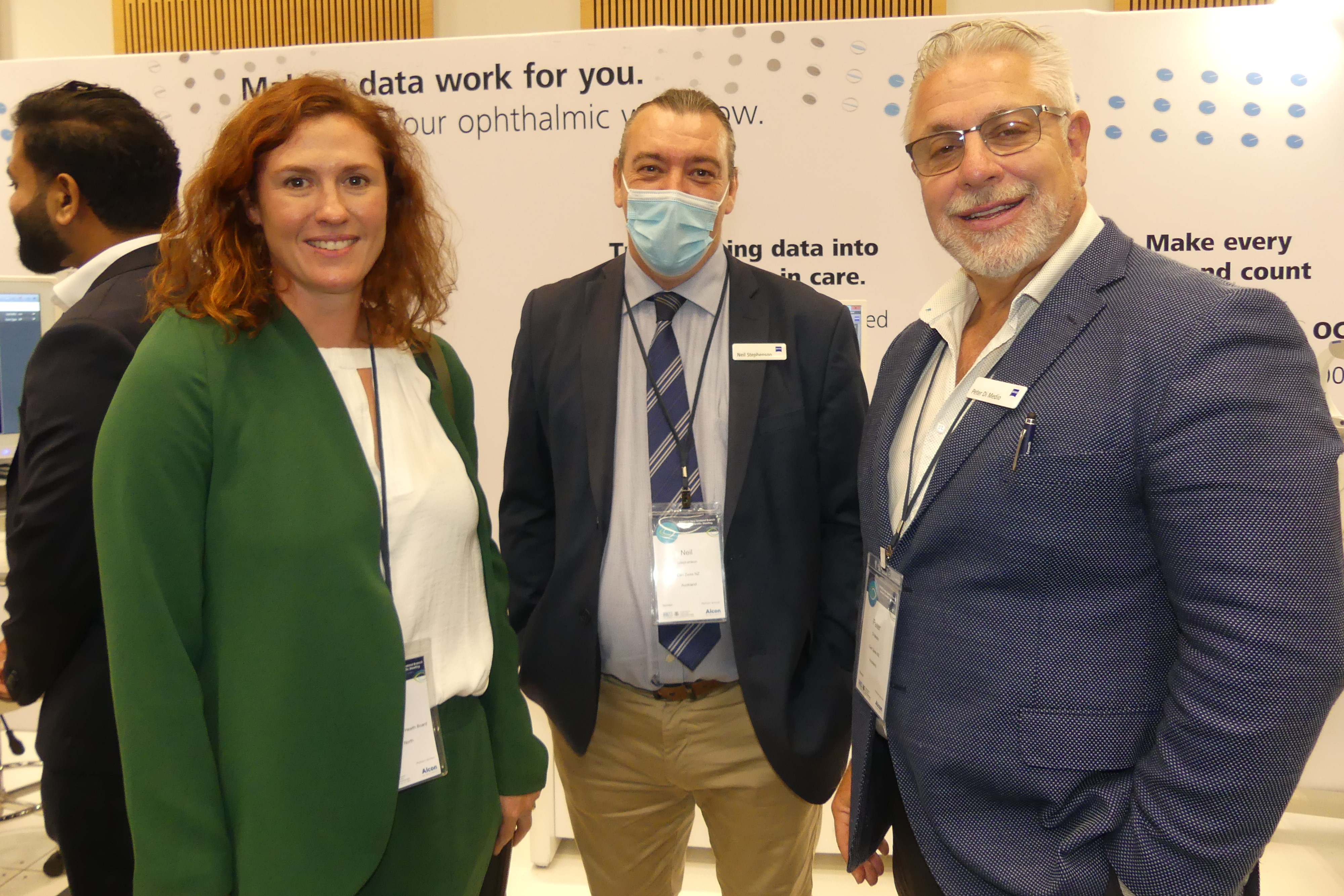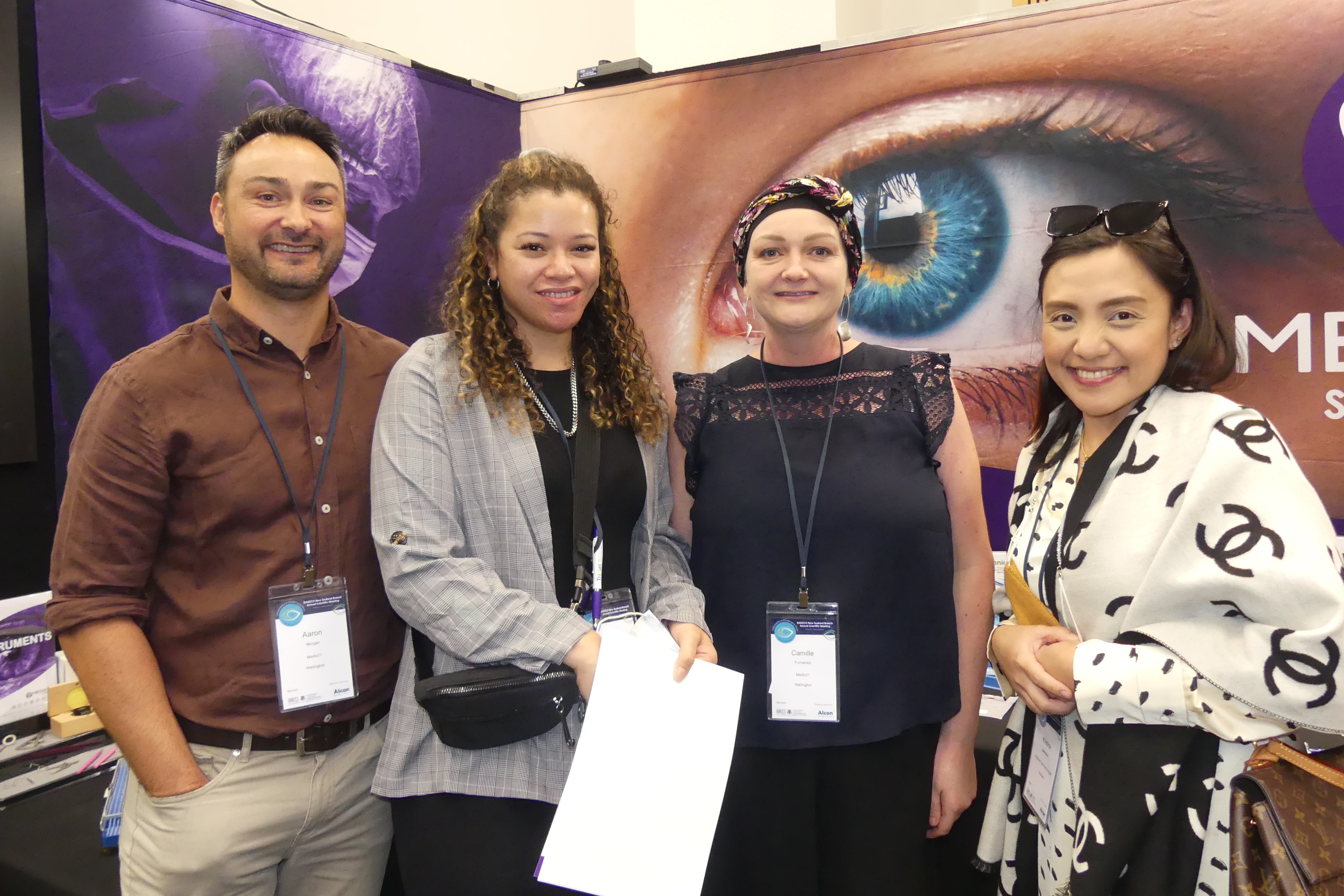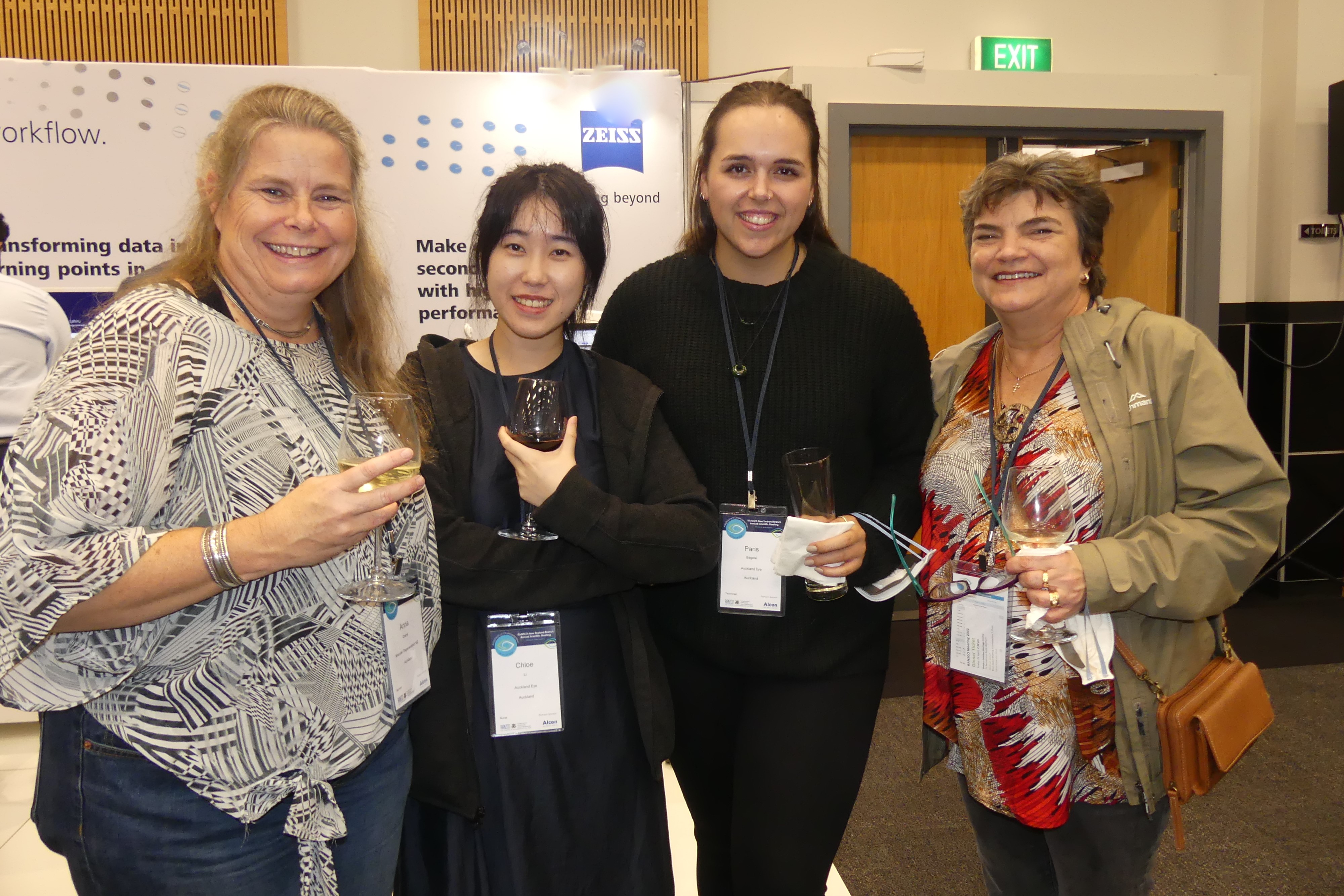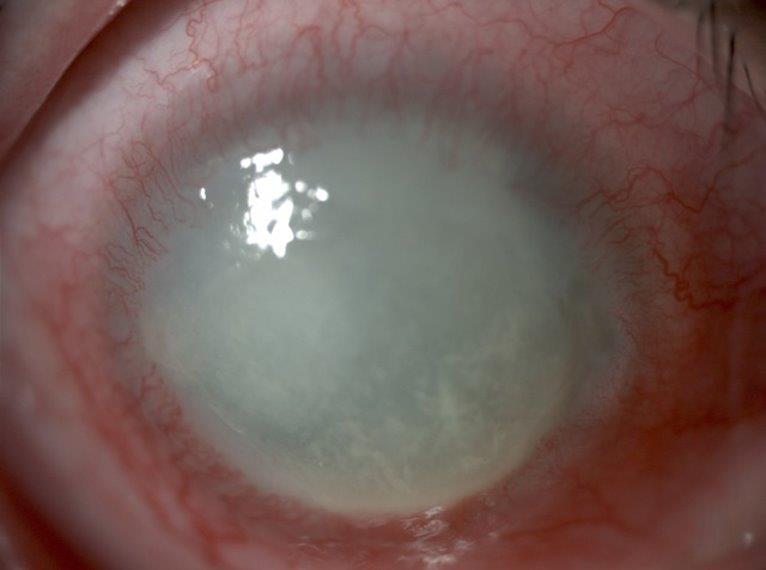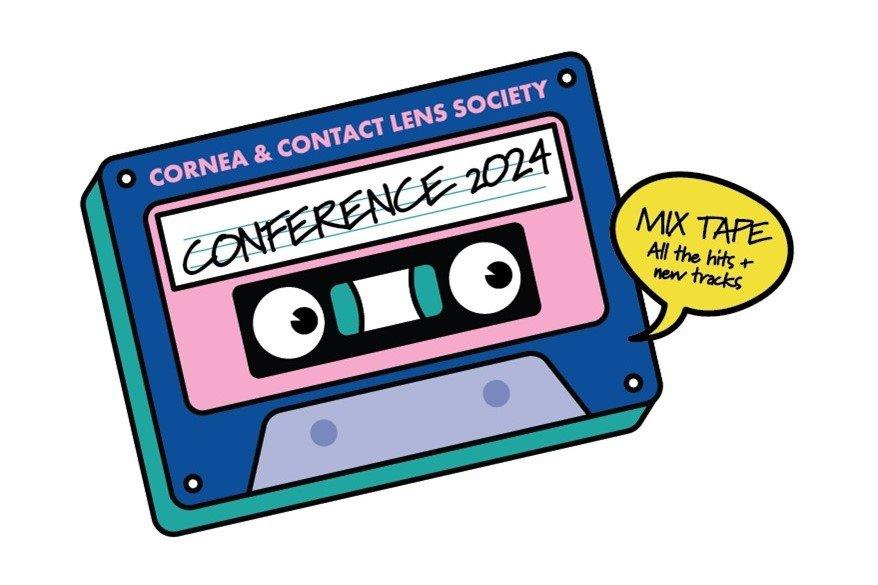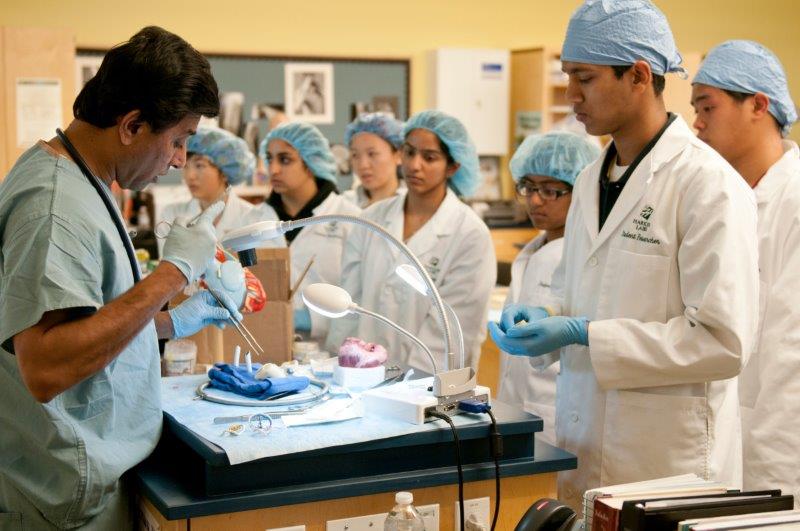Device Tech: focus on portability, environment
Reflecting two of the main themes of the RANZCO NZ conference, portable, space-saving devices for use with more remote communities, and more environmentally friendly technologies, were the main focus on Device Technologies’ stand. This is particularly important in cataract surgery, said Device’s Diego Sonderegger, as the country’s district health boards (DHBs) and public sector ophthalmologists consider new ways to reach more people, more equitably and more efficiently.
On the diagnostic side this includes products such as Topcon’s Maestro2, a user-friendly OCT-fundus camera system that automatically performs alignment, focus and capture with a single touch, all within a space-saving design, said Device’s Regan Clark. “It’s very self-contained and can come with its own carry case, so it’s easily transportable in a van or large car. This technology is increasingly attracting more interest as some DHBs, such as Counties, Auckland and Northland, look to develop initiatives, like outreach clinics, to better serve some people in their communities.”
On the surgical side is Oertli’s CataRhex 3, which at just 5kg is one of the lightest and most compact surgical platforms available, said Sonderegger. “The CataRhex 3 now comes with the unique Speep pump, which offers even more efficiency and precision in cataract surgery through its precise control of flow and vacuum.” Considerable cost savings can also be achieved with the system’s fully reusable consumables, including I/A vacuum cassettes and tubings, said Sonderegger. “This helps surgeons reduce cataract surgery CO2 emissions and non-recyclable waste.”
The Covid pandemic highlighted many of New Zealand’s social inequalities, said Clark. “This, and the government’s commitment to be carbon neutral by 2050, means the whole way we do things has to change.”









